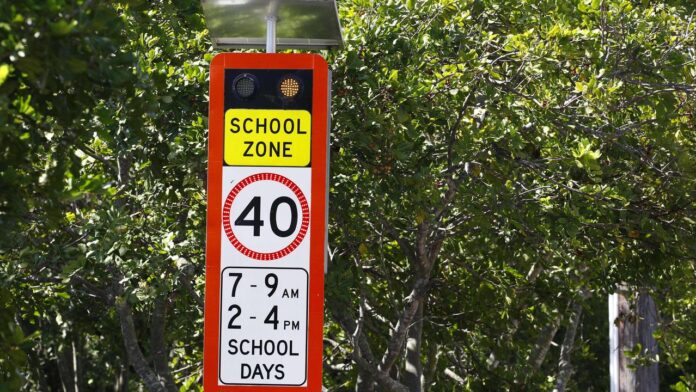[ad_1]
Nearly one in three Australians has admitted to speeding in a school zone, according to alarming new research, sparking calls for drivers to slow down around pick up and drop off times.
To make matters worse, one in 10 drivers admitted they chose to speed in a school zone after not seeing children nearby while one in 20 have had either an accident or a near miss near a school, the survey of 1000 drivers conducted by AAMI revealed.
The majority of Australian drivers (72 per cent) admitted to exceeding the speed limit in general, with two thirds saying they do so because they didn’t notice road signs.
School pick up time (between 2pm and 4.30pm) has been found to be the most dangerous time on the roads, according to the company’s analysis of more than 350,000 insurance claims across the country.
Queenslanders were the worst offenders when it comes to speeding in a school zone, with 40 per cent admitting to doing so, followed by Victoria and NSW at 33 per cent each.
South Australians were the safest, with less than a quarter (22 per cent) admitting to the dangerous act.
There is “absolutely no excuse” for drivers speeding in school zones, AAMI claims manager Leah James said, noting that reduced speed limits in the zones had been in place for decades.
“School aged children, particularly those starting Prep or under 10 years of age have limited road safety experience and can behave unpredictably,” Ms James said.
“The onus is on us as adults to protect their lives and ensure they can get to and from school safely every day.”
A pedestrian crossing the road has a 87 per cent chance of surviving if hit by a car travelling 40km/h or less, a figure that drops dramatically as the speed increases.
Australians are being urged to slow down on the roads to decrease road deaths involving children.
“Each year more than 1200 lives are tragically lost on Australian roads,” Australian Road Safety Foundation chief executive Russell White said.
“No one wants to be involved in a car accident with a child, these can be traumatic and have a ripple effect in the community, not just on those involved.
“School zones are in place to protect lives and prevent fatalities but are only effective when adhered to.”
[ad_2]
Source link


